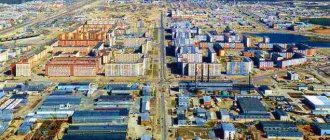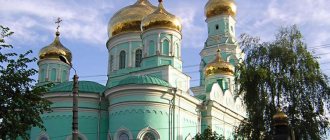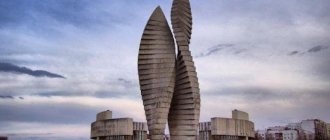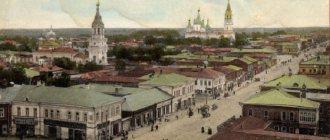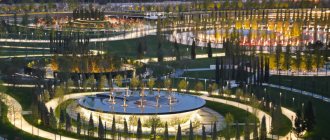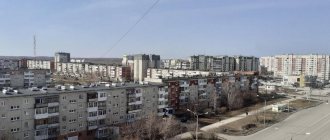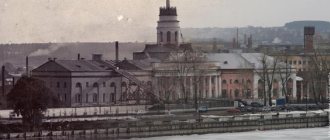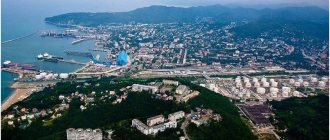On the weekend of September 14 and 15, 2021, Yegoryevsk will celebrate its 241st anniversary. An extensive festive program has been prepared for City Day with sports and entertainment events, a concert, fireworks and other entertainment.
Yegoryevsk is a city in the Moscow region of Russia. The center of an administrative-territorial unit (city of regional significance Yegoryevsk with administrative territory) and the municipal formation of the same name (city district of Yegoryevsk).
Holiday City Day
Poster of events for Yegoryevsk City Day in 2019
The city is named after St. Yegoriy, that is, St. George the Victorious. On the site of the city in the 16th century there was the village of Vysokaya, which was later renamed the village of Yegorie-Vysokoye (after the parish church in honor of Yegorie). In 1778 it became the city of Yegoryevsk.
September 14
08.00 Festive service at the Trinity Monastery.
09.30 Procession from the Trinity Monastery to the square. Alexandra Nevsky st. Vladimirskaya- st. Sovetskaya-pl. Alexander Nevsky.
10.00 o'clock Thanksgiving prayer on Alexander Nevsky Square.
After the end of the festive services and the religious procession from the Holy Trinity Convent to the Alexander Nevsky Temple, interactive programs will start.
At 11.00, the work of the art platform “City in the Palm of Your Hand” will begin on the site near the Museum of Local Lore with an artistic interactive for residents, an exhibition of local artists, an exhibition of works from students of the Yegoryevsk Children’s Art School and master classes for children. The “Open Microphone” event from the Central Library will also take place here. Anyone can read poetry or congratulate everyone on City Day.
From 12.00 on Sovetskaya Square the interactive program “Sing. Play. Dance." It will be interesting for both adults and children: performances by a brass band and folk ensembles, game programs for children, master classes on Guslitsky painting and drawing on water, a “folk” flash mob.
The Yegoryevsk Museum will open the exhibition “Biography of Creativity” by the famous Yegoryevsk artist, member of the Union of Artists, Anatoly Vasilyevich Strochilin. The meeting with the author will take place at 12.00 in the exhibition hall of the Yegoryevsk Museum.
See also: Sharp warming will come to Moscow on Sunday
From 14.00 in the Park “200 Years of Yegoryevsk” festive events dedicated to the 241st anniversary of the founding of the city of Yegoryevsk will start. There will be two stages, a food truck area, attractions, and the sale of souvenirs will be organized. Participants of the festival will be able to rise in a hot air balloon, become spectators and participants in a concert of youth groups of the city, and a breakdance festival.
From 15.00-18.00 Children's interactive program “City of Happy Children” at the fountain.
At 18.00 the ceremonial part will begin with the participation of creative groups of the city and “stars” of the modern stage.
September 15th
On September 15, the annual Festival of VIA and rock groups “Egoryevsk - 241” will be held in the park “200 Years of Egoryevsk”. The Festival time is from 12.00 to 21.00.
Yegoryevsk will celebrate City Day on September 12
This Sunday Yegoryevsk will celebrate its 243rd birthday!
Sovetskaya Street will be blocked from the intersection with the street. Ryazanskaya and to st. Lieutenant Schmidt from 8.00 to 23.00. At 15.00, the entertainment program “RECORDS IN EGORIEVSKY!” starts on an improvised platform near the Zolotoy Uley shopping center.
On this site, anyone can try to set their own personal record in the following categories: - “The widest smile”; - “Widest hugs”; — “Heroic strength” (the largest biceps girth in men); — “Kulachische 2021” (the largest fist girth for men); — “World standard legs” (the longest foot in men); — “Rich Soul” (the largest chest girth in women); — “Thin nature” (the smallest waist circumference in women); - “Russian braid” (the longest hair for women). Record holders will be awarded and included in the Yegoryevsk book of records! Another interesting site will be located near the building of the Znamya Truda newspaper. A friendly team of librarians will be waiting for you here. And not to read books, but to draw, create and exchange... flowers and books.
On this day, you, dear residents of Yegoryevsk, will be able to choose your favorite book from the “book sale”, you will be able to exchange your smile for your favorite houseplant (from those offered), you will be able to depict your mood and decorate a magic tree with it.
The site will be interesting for both children and adults. Start of work from 15.00. The Mosregband orchestra will perform at the Eternal Flame with the festive program “City of Good Mood”. The program starts at 15.00. Here, from 16.00 - a concert program of creative teams of cultural institutions. The ensemble “Indian Summer”, the folk ensemble “Meshcherskaya Box”, the ensemble “Russian Soul”, the ensemble “Song of the Russian Soul”, the ensemble “Aquamarine” will perform for you. On the Cathedral Square on City Day from 15.00 there will be master classes on creating cartoons in various techniques, a master class on pottery, and a military historical site with an exhibition of weapons, armor and equipment of 18th century warriors. You will find master classes from the Yegoryevsk Museum on Guslitsky painting and the birth of a doll, a master class on creating a Guslitsky cockerel, a game of Skittles, and a shadow theater. The annual youth meeting “Egorievsk city open” will be held at the swing, there will also be good games from , a performance by strongmen and the game “Adventure” from the art studio “Rancho”. On Cathedral Square there will be sites for the public organization “Young Traffic Inspectors”, the Moscow Region Road Safety Union and a speed reading school. Children will find a face painting area and numerous photo zones for children and adults! What about in the evening? From 18.00 to 19.00, soloists of the youth theater studio “Violet of Montmartre” of the G. Konin Palace of Culture will perform on the central stage on Cathedral Square with the program “Melodies of Soviet Operettas”. From 19.00 the evening concert program starts with the participation of creative groups of the Palace of Culture named after. G. Konin, namely the folk ensemble “New Music”, the vocal group “Bams” and the choreographic ensemble “Grace”. Guests of the evening are Maxim Lidov and the Strelki group.
Fireworks at 22.00.
Source:
https://inegorievsk.ru/novosti/novosti-gorodskogo-okruga-egorevsk/egorevsk
What time to watch the fireworks on Yegoryevsk City Day in 2019
The city has preserved historical and religious buildings, there are museums and other cultural buildings: the Historical and Art Museum, the Holy Trinity Convent (19th century), the Alexander Nevsky Cathedral (late 19th century), the building of the city school in the Art Nouveau style (1909), the palace culture (1929).
On Saturday, September 14 at 10 p.m., the holiday will end with fireworks, immediately after the end of the concert program.
The center of modern Yegoryevsk is a monument to urban planning of the late 19th - early 20th centuries. At that time, thanks to the efforts of the mayor Nikifor Mikhailovich Bardygin, Yegoryevsk was considered one of the most comfortable cities in the Ryazan province. The city preserves the historical appearance of the central streets.
Extracurricular activity: “History of the city of Yegoryevsk”
City of St. Yegori
The history of a small town located on the banks of Guslitsa has evolved over many centuries. Like a continuous thread of time, it connected the past and the present. In the distant past, on the site of the city of Yegoryevsk there was the village of Vysokoye. The first mention of him is found in the will of the Moscow prince Vasily the Dark. According to legend, the village was founded much earlier by the Chernigov boyar Fyodor Byakonty. Chernigov residents turned out to be good builders and traders.
The village of Vysokoye was famous for the cultivation of a special variety of hops, which were grown on juniper stamens. The excellent strong drink of the local brewers was so dizzying that a saying arose about it: “He had a gander in his head.”
Trade routes from Moscow to Kasimov, from Vladimir to Kolomna passed through the village of Vysokoye. The area was famous for market days and fairs. The most famous and populous was Nikitskaya, to which traders and artisans from neighboring districts flocked every autumn. Nikitin's Day (September 15) has been celebrated in Yegoryevsk since ancient times. The area became famous for Guslitsky book ornaments, copper casting and wonderful wood carvings.
During the era of Catherine, the village of Vysokoye received the status of a city. The city bears the name of St. George the Victorious. The city received its own coat of arms. The symbol of Yegoryevsk became the victory of good over evil - the pierced serpent by the hand of the heavenly intercessor.
The golden period of Yegoryevsk is associated with the name of the mayor N.M. Bardygina. The city is growing, improving and gradually turning into one of the best cities of its time.
Gymnasiums and schools are opened, parks and squares are laid out in place of vacant lots, water supply and lighting appear, railways and pavements are laid. The city is remarkable for its architectural structures. The combination of factory towers, bells, and cathedral domes recalls the fabulous silhouette of the city.
Our city is famous not only for its past, but also for its present. The borders are expanding every year due to the construction of residential areas. Yegoryevsk has the status of a historical center among 22 cities in the Moscow region.
The main concern of the city authorities is young residents. The city has built 11 secondary schools, 2 gymnasiums, a lyceum, branches of 5 universities, medical and pedagogical schools, and an aviation technical college, where Valery Chkalov studied.
Much attention is paid to the physical health of residents. The city has 39 gyms, 2 stadiums, two of the best swimming pools, a Sports Palace, a ski resort, and a school for young football players “Master-Saturn”.
You can talk about Yegoryevsk and the Yegoryevsk residents for a long time. The city has a rich and interesting history. Today, many streets bear the names of our famous compatriots. The beauty of our places is sung in poems and songs, and captured in the paintings of artists.
Yegoryevsk
Name
Named in honor of St. Yegoriy, that is, St. George the Victorious. On the site of the city in the 16th century there was the village of Vysokoye, which was later renamed the village of Yegorie-Vysokoye (after the parish church in honor of Yegorie). In 1778 it became the city of Yegoryevsk.
History before the founding of the city. Village Vysokoe
Main article: Kolomna district
The will of Moscow Prince Vasily the Dark dated 1462 mentions the village of Vysokoye. However, legend says that at the beginning of the 14th century, the Chernigov boyar Fyodor Byakont settled his people here. In the will of Ivan Kalita of 1328, there is a mention of the Guslitskaya volost on the territory of the modern urban district of Yegoryevsk[3][4]. Since the 16th century, the village of Vysokoye received a different name - Grigorievskoye.
Ryazan province
Main article: Ryazan Governorate
Main article: Yegoryevsky district
Plan of the city of Yegoryevsk at the end of the 19th century
In 1778, a new city, Yegoryev, appeared on the map of the Russian Empire (the city suffix “sk” was absent in the original edition).
Catherine II, by decree of August 24 (September 4), 1778, ordered the opening of the Ryazan governorate (province) with 12 districts in December of the same year. Among others, Yegoryevsky district was named. In connection with this, the village of Vysokoye was transformed into the city of Yegoryev.
The new city was very small. In its 106 courtyards lived 280 male and 295 female souls. The bulk of the population were merchants and townspeople.
In 1779 the city received a coat of arms. In 1780, Catherine II approved the development plan for Yegoryevsk.
In 1796, Emperor Paul I abolished the Yegoryevsky district. Yegoryevsk was turned into a provincial town without any residents and quickly began to fall into disrepair. The lands of Yegoryevsky district were divided between Zaraisky and Ryazan districts approximately along the Tsna River.
In 1802, Emperor Alexander I restored Yegoryevsk as a district center.
First half of the 19th century
When the Yegoryevsky district was recreated, part of its former villages - Dedinovo, Lovetsy, Verkhniy and Nizhny Beloomut remained in the Zaraisky district. Local government bodies are being recreated. The mayor appears again. He becomes fleet lieutenant Yakov Isaakovich Hannibal.
Yegoryevsk was famous for its annual fairs (grain trade). In the 19th century it was an important center of the Old Believers. In the same century it became the center of the weaving industry. In 1825, the merchant Kartsev built the first weaving factory[5]. The paper spinning factory of the Khludov brothers has been operating since 1845. Its buildings have survived to this day, and the clock tower is a decoration of the city.
Second half of the 19th century. Bardygin's era
The impetus for development was the construction of a railway line to Yegoryevsk from Voskresensk (1869). By order of Bardygin (the head of the city from 1872 to 1901), the Moscow architect I. T. Baryutin rebuilt the Trinity Church of the Holy Trinity Convent and the house of the mayor himself[6]. The largest undertaking of Nikifor Mikhailovich Bardygin was the construction of a city water supply system in 1877.
Also in 1879, in honor of the next rescue of Alexander II after the sixth assassination attempt, the Alexander Nevsky Temple was built in the central part of the city.
Early 20th century
After Bardygin's death in 1901, Dmitry Vladimirovich Makariev became the mayor.
The son of Bardygin himself, Mikhail Nikiforovich, was elected to the Third State Duma in 1907 and was a member of the progressive faction.
During his time as a deputy, he built the “Museum of Russian Antiquity” [7] (now the Historical and Art Museum), and also completed the construction of a school named after Tsarevich Alexy.
In 1904, in Yegoryevsk, after a series of strikes at the Khludov factories, the RSDLP movement was formed, led by Grigory Konin.
On October 23, 1905, the Social Democrats staged a demonstration in the City Garden, it was dispersed, and 2 students soon died from their wounds. The protesters organized pogroms of merchants and townspeople.
In 1910, with the arrest and death of Konin, the RSDLP ceased its activities in Yegoryevsk.
- Yegoryevsk on pre-revolutionary postcards
- General view of Moscow street at the beginning of the 20th century
- Kazan Church and Red Cathedral (St. George's)
- Assumption Cathedral (White)
- Holy Trinity Maiden Maryinsky Monastery
- Vladimirskaya street from the cathedral
- Zemsky hospital.
- Red Cathedral and Kazan Church
- Church of St. Alexander Nevsky
- From the bell tower of the White Cathedral to the north
- Women's gymnasium
- Weaving factory of M. N. Bardygin
- Factory Br. Khludov and M. N. Bardygin
Revolution
| The section lacks links to sources. Information must be verifiable or it may be deleted. You can |
On March 3, 1917, newspapers reached the city with the news of the abdication of the Emperor and his brother.
Here are the words of one of the workers at the Bardygin factory: [ source?
]
In the morning there was noise throughout all the workshops. Everyone in a joyful mood began to shout: “Revolution, revolution!” At that time I did not understand what a revolution was; For me, a working girl, one thing was clear: the people were rebelling, scolding the tsar, the factory owners, shouting that it was time to end the war. Then I hear people shouting throughout the workshops: “Finish your work and go outside!” Then all the workers completely stopped working at the factory and went out into the street, where they met a demonstration of workers from the Khludov factory and together with them went with the revolutionary songs “Boldly, comrades, in step” and “Hostile whirlwinds” to the Assumption Cathedral.
The demonstrators were joined by soldiers of the 80th reserve infantry regiment, led by warrant officer Blagonravov.
The regiment commander called on them to stop participating in the demonstration, for which he was killed by the soldiers.
In March, a Provisional Committee was formed, consisting of cadets and Socialist Revolutionaries.
On July 30, the former mayor of the city, Fyodor Khrenov, was killed.
In August, City Mayor Nikita Nikitovich Khrenov was beaten and died from beatings.
The Council of Workers' and Soldiers' Deputies was also organized, the majority of seats in which belonged to the Bolsheviks. Ostroumov was elected Chairman of the Council, Blagonravov was elected Deputy, and Yegor Vikulov was elected Secretary of the Council.
In the elections to the constituent assembly, out of 56,550 eligible to vote in the city and district, 30,135, or 53.29%, were won by the Socialist Revolutionaries (SRs). The Bolsheviks received 20,338 votes, or 35.97%.
As part of the Moscow region
In 1922, Yegoryevsky district was transferred to the Moscow province[8], in 1929, the Moscow region was formed on the site of the Moscow province.
State Emergency Committee
In August 1991, Democratic Russia organized a Coordination Council in the city; some deputies of the State Council sided with the protesters, but other deputies announced a ban on all actions against the State Emergency Committee and cut off contact with Moscow. In the second half of August 21, a rally was held in the city against the actions of the State Emergency Committee.
Today[when?]
On December 7, 2015, Yegoryevsk, until that moment a city of regional subordination, was classified as a city of regional subordination[9]. Before this, the workers' village of Ryazanovsky was included in the city.[10]. The Yegoryevsky district as a municipal formation and administrative-territorial unit was also abolished, the city began to form the Yegoryevsk urban district (created on November 7, 2015). In 2017, the working village of Ryazanovsky was separated back into a separate settlement[11][12].
Famous city leaders
| The section lacks links to sources. Information must be verifiable or it may be deleted. You can |
City Mayors
Frolov Afanasy Parfenovich (1809-1814 and 1824-1827)
Khludov David Ivanovich (1856-1860)
Bardygin Nikifor Mikhailovich (1872-1901)
Dmitry Vladimirovich Makariev (1901-1909 and 1913-1915)
Khrenov Fedor Panteleimonovich (1910-1913)
Khrenov Nikita Nikitovich (1915-1917)
Chairman of the Council of Workers' and Soldiers' Deputies
Blagonravov Georgy Ivanovich (1917)
Chairman of the Yegoryevsk Executive Committee
Komarov Nikolai Romanovich (1963-1974)
Lavrov Mikhail Trofimovich (1985-1991)
Head of the Yegoryevsky municipal district
Lavrov Mikhail Trofimovich (1991—2013)
Grechishchev Alexander Vladimirovich (2013-2015)
Head of the Yegoryevsk city district
Grechishchev Alexander Vladimirovich (2015—2021)
